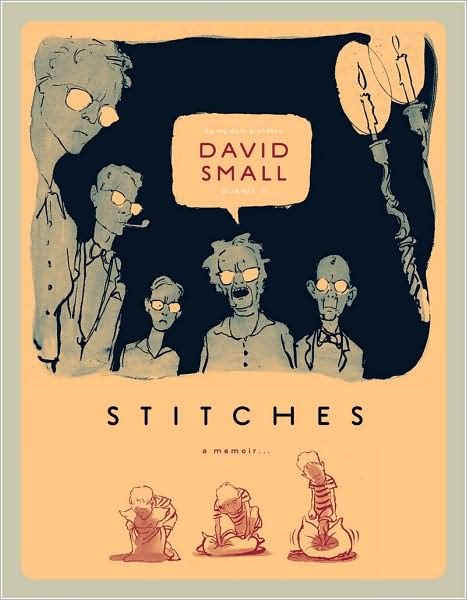The National Book Foundation released its list of 2009 finalists for the National Book Award last month and one of the biggest surprises was the nomination of “”Stitches,”” a graphic novel by David Small.
What’s surprising is not that a graphic novel was nominated for such a prestigious award. (That honor goes to “”American Born Chinese”” by Gene Luen Yang, which was the first graphic novel to be selected as a finalist in 2006.) What’s surprising is that Small’s book was nominated for the “”Young People’s Literature”” category.
But why wasn’t “”Stitches”” nominated for the nonfiction category? Bookstores place it in their biography section rather than with the other graphic novels. It can easily stand up to the other nominations, two of which are biographies, “”The Poison King: The Life and Legend of Mithradates, Rome’s Deadliest Enemy”” by Adrienne Mayor and “”The First Tycoon: The Epic Life of Cornelius Vanderbilt”” by T. J. Stiles. There’s even a memoir by David M. Carroll, “”Following the Water: A Hydromancer’s Notebook.””
The nomination itself is rather appropriate: “”Stitches”” is a memoir of Small’s traumatic childhood and his bout with throat cancer. His family lives in a world of unspoken secrets and oppressive silence that is given life through gray-ink washes and expressive lines.
The incident seems to be a matter of perception and reception — issues that have plagued comics for more than a century — by publisher W.W. Norton & Company and the National Book Foundation. It also seems to be a case of hedging bets.
As Erin Sinesky Lovett, assistant director of publicity for W.W. Norton, explained to literary blog Galleycat, “”We always intended to submit ‘Stitches’ in the young people’s category. We knew it would appeal to a YA (young adult) audience as well as an adult audience.”” Lovett also said that the graphic novel would appeal to readers who grew up on Small’s work as a children’s book writer and illustrator.
But that doesn’t make much sense given that Norton publishes titles from Fantagraphics Books, which has a strong stable of creators — R. Crumb, Paul Hornschemeier, Art Spiegelman, Charles Burns and Seth, for example — who regularly receive critical acclaim outside the world of comic books.
There have also been many notable comic book memoirs that would fit outside of so-called young adult literature. Alison Bechdel’s “”Fun Home: A Family Tragicomic,”” Lynda Barry’s “”What It Is,”” Marjane Satrapi’s “”Persepolis”” and some of the aforementioned creators’ autobiographical work succeed as comics and as literature.
It’s easy to see why comic books suffer from a credibility gap when the majority of what’s published, and seen by the public, is about superheroes. It’s like walking into a bookstore and you find 95 percent of the books are about hunky firefighters and their conquests, in and out of the fire station. And then, in a corner that’s the furthest away from any visible door, window or light, there’s a section for everything else you might want to read.
But just because 95 percent of comic books are mediocre and limited in scope, it doesn’t mean the entire medium should be dismissed. Every creative pursuit is bound to have gems buried in the dirt — it’s just a matter of knowing where to dig.
The National Book Foundation and publishers do a great service on behalf of comic books with their selection of “”Stitches,”” but they still have a way to go before their efforts seem sincere.
In 2006, “”American Born Chinese”” lost to “”The Astonishing Life of Octavian Nothing”” by M.T. Anderson. Yang serves as one of the five panel judges for this year’s “”Young People’s Literature”” category. It’ll be interesting to see who will win come Nov. 18.









